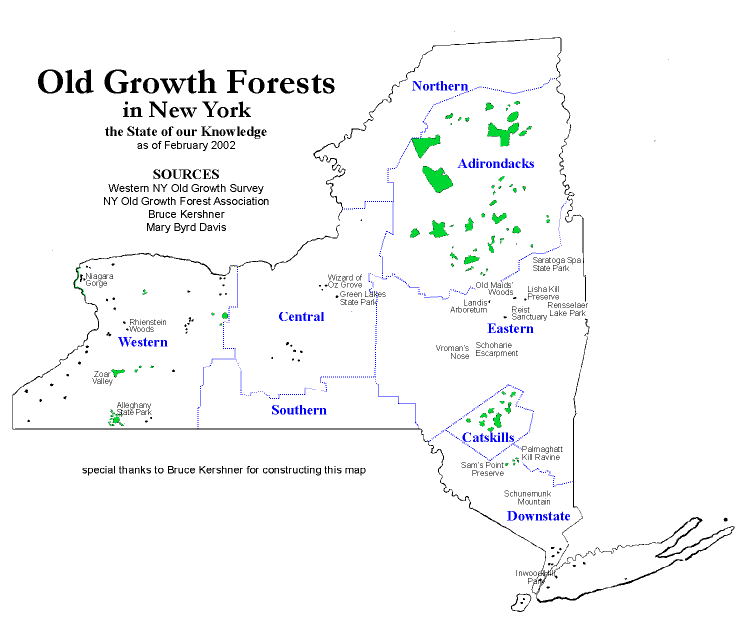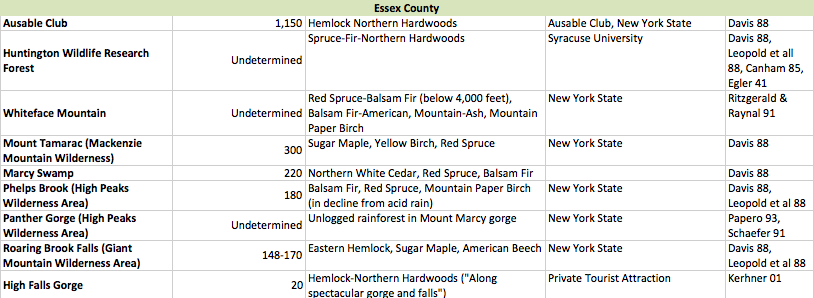Location of Old Growth Forests
The old-growth forests in the Adirondacks can be divided into two major groups: Spruce-yellow birch forests (McMartin) and Hemlock-American beech forests (Ziegler). Because spruce and hemlock were extensively logged in the park during the nineteenth century, their presence in areas of the forest indicates either virgin conditions (untouched by logging) or light logging (indicated by the ability of populations to recover). In some cases, loggers left enough spruce in certain stands that the population could recover and even a seasoned biologist would have difficulty identifying the imprint logging left on the area (McMartin). These old-growth forests also contain deep, rich soils supporting extensive fern growth in the understory thanks to a legacy of undisturbed development (McMartin).
When McMartin scoured the park, seeking her “Holy Grail” of old-growth forests, she discovered certain patterns concerning the location of old-growth stands. Those relatively untouched by the lumberman’s axe were generally found in hard to reach areas where challenging topography discouraged logging. In general, the mountains that intimated the loggers also protected these stands from large-scale natural disturbances from wind and weather. Another more unexpected old-growth forest pattern also emerged: in the Southern Adirondacks, along the lower-elevation hills, not much logging occurred because of a general lack of spruce. These hardwood forests were acquired by lumber companies during the logging boom in the Adirondacks, but the dominance of hardwoods ultimately rendered these lands worthless to the loggers. Thus, the lumber companies sold their holdings in this part of the park to the government in lieu of taxes (McMartin). Therefore, these forests were under state protection from a very early point, in some cases close to 200 years, which is generally considered enough time to restore old-growth conditions (Ketchledge). All in all, McMartin estimates there are half a million acres of old-growth forests in the Adirondacks, both “virgin” and “renewed.”

Map and chart DATA FROM The Earth Restoration & Reforestation Alliance







Works Cited:
Ketchledge, E.H. 1967. Forests and Trees of the Adirondack High Peaks Region. Adirondack Mountain Club: Lake George, NY.
McMartin, B. 1994. The Great Forest of the Adirondacks. North Country Books: Utica, NY.
Ziegler, S.S. 2004. Composition, Structure, and disturbance history of old-growth and second-growth forests in the Adirondack Park, New York. Physical Geography 25(2): 152-169.
